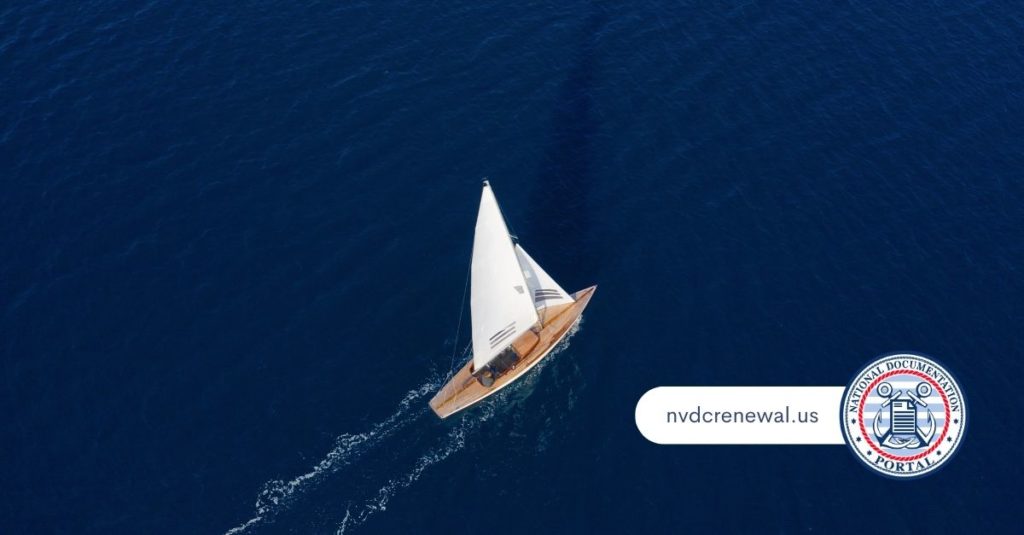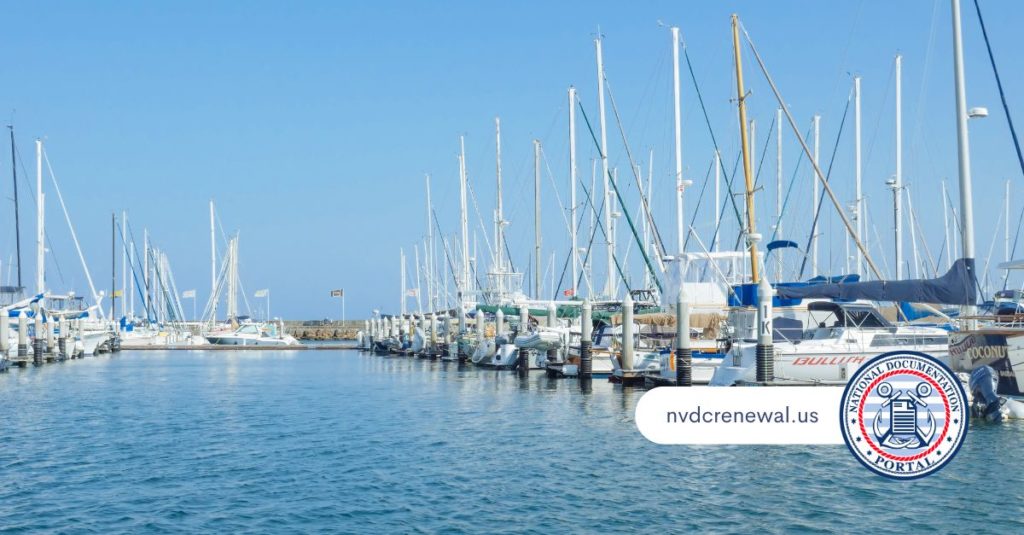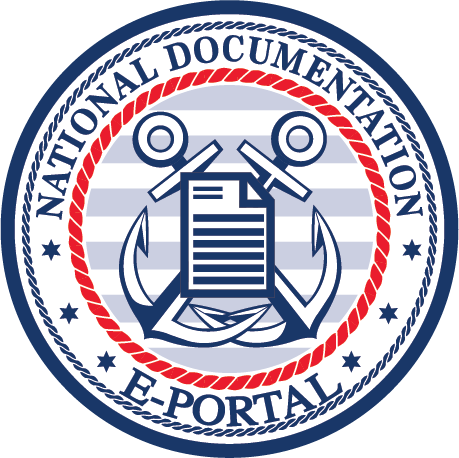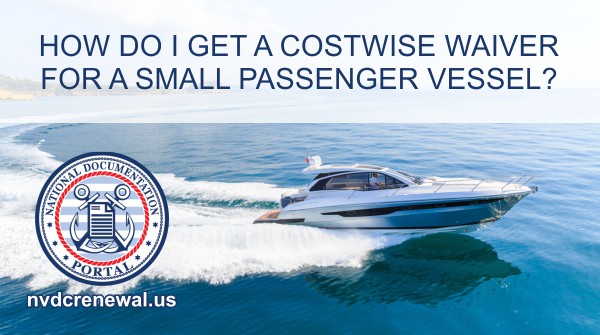If you own a foreign-built vessel and want to use it to carry passengers commercially within U.S. waters, you’ll need what’s known as a coastwise waiver, formally called the MARAD waiver.

This waiver allows you to bypass the American-built requirement of the Jones Act so your vessel can legally operate for limited commercial passenger use. At the National Documentation E-Portal, we simplify the process of accessing and completing the forms you need to apply for this waiver, helping you move forward efficiently with your maritime operations.
The waiver applies to small passenger vessels—specifically, foreign-built boats that are at least three years old and used only for carrying up to twelve passengers at a time. While this process involves federal documentation and regulatory compliance, our portal helps vessel owners access, complete, and file the Coast Guard documentation required for their maritime ventures.
The Fundamentals of the MARAD Waiver
The MARAD waiver is an exception to the American-built requirement within the Jones Act, a federal law that governs coastwise trade in the United States. Normally, vessels engaging in this type of trade must be built in the United States, owned by U.S. citizens, and documented under the U.S. flag.
However, under specific conditions, MARAD grants a waiver for small passenger vessels that were built abroad, allowing them to carry up to twelve passengers for hire within U.S. waters.
To qualify for the waiver, a vessel must meet several key requirements established by MARAD and the U.S. Coast Guard. The vessel must:
- Have been built or substantially rebuilt in a foreign country.
- Be at least three years old.
- Be owned by a U.S. citizen.
- Be used solely for carrying passengers—no cargo or commercial fishing is permitted.
The waiver does not allow for freight transport, towing, dredging, or any other commercial use beyond passenger service. Once issued, the waiver effectively removes the American-built restriction, but all other federal regulations—such as documentation, safety, and inspection—still apply.
Eligibility and Restrictions
Before applying for a MARAD waiver, vessel owners should ensure their vessel’s use and specifications fit the eligibility guidelines. The waiver only applies to vessels used for carrying no more than twelve passengers at any one time. This passenger limit is established by federal law and enforced by the U.S. Coast Guard to maintain safety standards and regulatory consistency.
Additionally, a MARAD waiver cannot be used for vessels engaged in fishing, towing, or cargo operations. These restrictions are in place to preserve the intent of the Jones Act and protect industries that rely on domestic shipbuilding and maritime labor. If a vessel owner violates the waiver’s terms by using the vessel for unauthorized commercial activity, the waiver can be revoked.
It’s important to note that the waiver does not exempt vessel owners from other U.S. Coast Guard documentation requirements. You must still obtain a Certificate of Documentation through the National Vessel Documentation Center (NVDC) for your vessel. This documentation serves as official federal recognition of the vessel’s ownership and operating status. If you’re uncertain whether your vessel already has active documentation, you can perform a vessel documentation search through our portal.

The Role of the Jones Act and the Waiver’s Purpose
The Jones Act, formally part of the Merchant Marine Act of 1920, was created to support American shipbuilding and maritime labor. It restricts coastwise trade to vessels built in the United States and owned by U.S. citizens.
The MARAD waiver was introduced to help promote tourism and small-scale passenger services. It does this allowing older, foreign-built vessels to operate in U.S. waters under limited conditions.
The waiver is especially beneficial to individuals and small businesses that want to use their foreign-built vessels for charter cruises, sightseeing tours, or other small passenger operations. Through this waiver, MARAD supports a balance between protecting domestic maritime industries and encouraging coastal tourism and entrepreneurship.
Vessels operating under a MARAD waiver must still adhere to Coast Guard inspection and safety standards, and they must maintain proper documentation as described under 46 CFR § 67.113, which outlines requirements for the issuance of Certificates of Documentation.
How to Apply for a MARAD Waiver
Applying for a MARAD waiver involves submitting an application to the Maritime Administration. This application typically requires detailed information about your vessel, its origin, ownership, and intended commercial use. The main steps include:
- Completing the MARAD Small Vessel Waiver application.
- Providing proof of U.S. citizenship.
- Supplying documentation that confirms the vessel’s age and place of build.
- Describing the commercial passenger service you intend to operate.
Once submitted, MARAD will review the application to ensure your vessel meets the eligibility standards. The administration also publishes a public notice of the waiver request in the Federal Register to allow for public comment. After the review period, if no objections are received, MARAD may issue the waiver.
We provide forms for initial vessel documentation, changes in ownership, and renewal of documentation as required by federal law. By consolidating these resources, we help vessel owners complete the necessary paperwork efficiently and correctly.
Filing for Coast Guard Documentation After Approval
Receiving a MARAD waiver does not automatically document your vessel with the Coast Guard. Once the waiver is granted, vessel owners must still obtain or update their Certificate of Documentation. This step officially authorizes your vessel to operate under U.S. registry and confirms compliance with federal maritime law.
The documentation process involves submitting the appropriate forms to the National Vessel Documentation Center. Additionally, to maintain active federal documentation, you’ll need to complete a documentation vessel renewal each year. Renewal ensures your vessel’s documentation remains valid and that you stay in compliance with Coast Guard regulations.
How Our Portal Assists Vessel Owners
At the National Documentation E-Portal, we provide a secure, centralized resource for vessel owners looking to access and complete the official Coast Guard documentation forms required by the NVDC. While we do not issue waivers ourselves, we simplify the process of managing and submitting the related paperwork.
Through our portal, vessel owners can:
- Access the forms required for U.S. Coast Guard documentation.
- File initial documentation for new vessels.
- Process renewals and transfers of ownership.
- Update information following a MARAD waiver approval.
Because the MARAD waiver application process requires multiple steps across different government agencies, having a reliable online source for official documentation forms saves time and reduces the risk of incomplete submissions. We ensure that vessel owners have the correct, up-to-date forms available whenever they need them.
Maintaining Compliance After Receiving a MARAD Waiver
If you get a MARAD waiver, you still have to comply with laws. You must continue to comply with all applicable Coast Guard and federal regulations. This includes maintaining safety standards, proper vessel markings, and up-to-date documentation. The waiver itself does not eliminate other legal requirements—it simply allows your foreign-built vessel to participate in a limited form of coastwise trade. Regular maintenance of your documentation is essential.
Moving Forward with the MARAD Waiver Process
Obtaining a MARAD waiver can open new opportunities for vessel owners interested in offering small-scale passenger services in U.S. waters. By meeting the eligibility requirements and completing the necessary steps, you can operate your foreign-built vessel legally and responsibly.
At the National Documentation E-Portal, we make it easier for you to handle the Coast Guard documentation process associated with your maritime operations. Whether you’re applying for initial documentation, renewing your vessel documentation, or preparing to begin passenger service after receiving your MARAD waiver, our online portal provides the tools and access you need to stay compliant and keep your operations running smoothly.

